#no longer slightly tall for a european-derived american but average
Text
Went in for a checkup today and got basically all good news- they'll be able to re-issue all my prescriptions so I don't have to get just a month at a time anymore, my blood pressure is pretty good, and I've got a referral for my usual diabetic bloodwork.
Over the past couple years, from my peak weight, I've lost an entire shirt size, my face has gone from bright red and spherical to mostly even colored and ovoid, and I've got a lot more energy for things like walking short distances (like 2 km at the outside). So I really thought I would've lost a significant amount of weight.
But no. I've lost, maybe, 25-30 lbs, like 12 or 13 kg, when I needed to lose almost ten times that much to get down to 'healthy'. Reasoning it through, I've put on a lot of muscle specifically in my legs, having gone from totally sessile computer lump who rarely walks father than the distance to his car to mostly-sessile computer lump who lives on the 3rd floor and has to walk down to the grocery store a few times a week. And as every person who's ever worked out to lose weight has told themselves in a panic, 'muscle weighs more than fat'. Meaning it's more dense, presumably, to avoid whole the 'steel's heavier than feathers' Limmy thing.
So okay. I've gotten healthier, that's the main thing. My blood pressure is looking genuinely good, and while my blood sugar is probably too high still due to being addicted to coffee but unable to drink it without lots of creamer, on the whole, this is good news. I should be happy.
I am not happy.
I feel like a guy who's climbing a mountain through raw determination and teeth-grinding effort, thinking he's at least nearing the halfway mark, turning a bend to realize he's not even where people pitch their goddamn base camps. 'Sisyphean' springs to mind, though aside from putting some weight back on last year when I was back in the US for 6 months, I haven't actually lost much progress, at least. I've just made... so little progress compared to what I thought.
Part of the problem of course is that I'm too fat for regular scales; they're just not rated to deal with someone my size and report 'error' if I'm lucky and they don't just fuckin break. So I had no means of measuring my progress other than 'shirt fits better now' and 'can walk a few blocks without feeling like death now'. And then I got weighed properly for the first time in two years, and, oy vey.
It's not going to change anything, I'm still going to live on the third floor and need to walk around the neighborhood on a fairly regular basis, but man is it discouraging. And before anyone says it, yes, I know it's technically a significant amount of weight for a human to lose, and it's healthier to lose it more slowly over time than all in a rush, and I'm on the right track, but god. I thought I was doing better than this.
Anyhow that's why I'm in a funk tonight, how's by you kind folks?
#boring personal bullshit#also basically confirmed my height has gone down a total of 2.5 inches or so from my peak#which you know gravity is a harsh mistress i kinda knew that a few years ago but it's confirmed#no longer slightly tall for a european-derived american but average#still a bit tall for a guy who's half mexican i guess i'll have to settle for that
22 notes
·
View notes
Link
My article on hubpages.
Small dogs have been affected by this breeding for exaggerated looks more than other breeds, as they are overwhelmingly companion dogs, and perhaps when people want a smaller dog, they are naturally attracted to more "baby-like" features, including a flat face, stubby legs and a cobby body.
Here are a list of small dog breeds (under 40 cm/15.75"), that are all more or less "natural" in appearance, with no exaggeration, and no challenging coat that needs constant grooming.
They are sorted for size, from smallest to largest.
Note that measurements in breed standards may vary slightly between kennel clubs.
Pražský Krysařík - the Prague Ratter
Not the Chihuahua, this is actually the smallest breed in the world according to breed standard, standing only 20-23 cm above the sea and weighing around 2.6 kilograms.
Originally a rat hunter, the Prague ratter is an active, affectionate, courageous and easily trained dog, which can be used in many activities including agility and obedience, as well as just cuddling in the couch.
Unlike many breeds of the same type, they are not usually yappy, but rather quiet.
The coat is short and smooth, and requires little to no care, but they do get cold and will need protection in cold weather.
With all these traits, it makes for a perfect companion dog for someone who wants a dog smaller than a cat.
Still, as with all small dogs, one must remember these very much grow into adult dogs, and need consistent rules and training, just as much as a large dog.
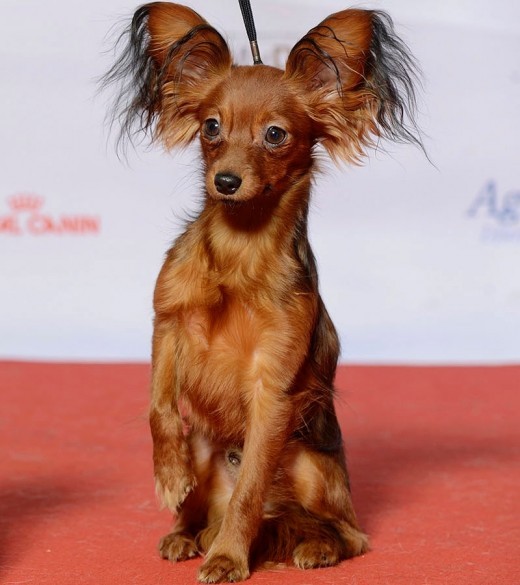
Russkiy toy - the Russian toy terrier
The Russian toy terrier is just around the same size as the Pražský Krysařík and Chihuahua. Superficially similar to the PK, they come in two coat types, where the long-coated (pictured) has uniquely feathered ears.
They stand slightly taller than the PK, at 20-28 cm, and weigh from 1.5-3 kg.
They were ratters and watch dogs, sounding the alarm if anything suspicious catches their attention. This makes them noisier than the PK, but like them, they are bold, lively, playful and affectionate.
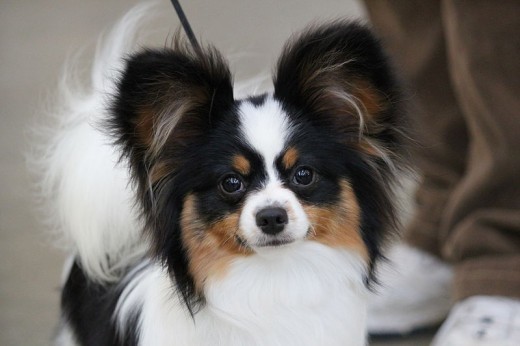
Papillon and Phalène - the butterfly dogs
The French butterfly dogs ("Papillon" means "butterfly", "Phalène" means "moth") are so named due to the shape of their ears.
Unlike the previous two, this is a toy spaniel, rather than a toy terrier. Their common ancestry with the hunting spaniels is however very remote, as dogs very similar to these have been the companions of royals and nobles for at least four hundred years.
They stand 20-28 cm tall, and vary greatly in weight, from 1.5-5 kg. The only difference between the two is that the Papillon's ears are erect, while the Phalène's ears are drooped, and the Papillon is by far the much more popular of the two.
They are affectionate and playful with the family but may be reserved towards strangers. These little dogs can handle much more than people think, and you will most likely tire long before they do.
Agility, obedience, tracking, assistance dog, other than due to the sheer lack of physical size, there is almost nothing these dogs can't do.
They fit well as a family dog, as a teenager's first dog, as a companion to the elderly, just be careful with the youngest children, who could hurt the dog.
Despite their seemingly long and thick coat, the coat is single-layered and the dogs do not handle cold weather well. Coat care is also relatively simple, doing fine with the occasional brushing.
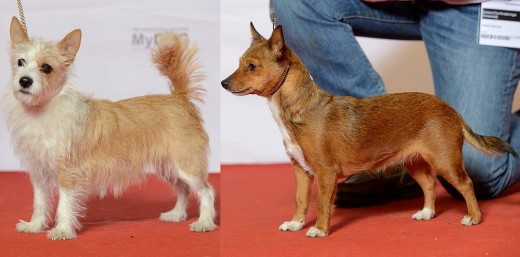
Portuguese Podengo Pequeno
The Podengo superficially resembles a larger and more moderate Chihuahua, but it is a purely European dog, and is instead related to the Spanish Podenco, and the Maltese Pharaoh hound.
At 20-30 cm in height and 4-6 kg in weight, they are the smallest size of Portugal's national breed, a rabbit hunting dog which has been common around the Mediterranean for possibly thousands of years. The Pequeno is also used as a companion dog and ratter, and can be quite a watchdog.
Confident and active, this dog needs something to do, or it will find ways of entertaining itself. It is also easily trained, social and friendly.
This little dog is one of the most long-lived breeds of all, with a lifespan of over 15 years not being unusual.

Miniature Pinscher - like a tiny Dobermann
The "Min Pin" is the small cousin of the Dobermann pinscher and German pinscher. It is however not a "miniature Dobermann". It is an old breed with a rather hazy origin. Like many other dogs in this size group, their history started as a ratter.
Standing 25-32 cm tall, and weighing 3.6-4.5 kilogram, this fearless little dog comes in black and tan and red, and can have its ears either erect or floppy (where it is legal, ears are typically cropped).
They may look small and cute, but don't let that fool you. These dogs can be quite a handful, energetic, stubborn and independent, with a high activity level. Many get them for their popularity and appearance, not realizing it is too much dog for them.
Nevertheless, in the right hands the "Min Pin" makes a great active companion dog and watch dog.
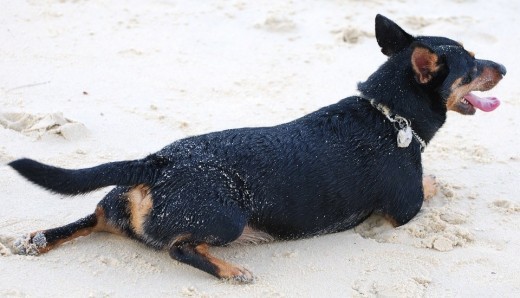
Lancashire heeler - the tiniest herder
Closely related to the Welsh corgi with some terrier blood rumored, the Lancashire heeler is more moderate in shape with longer legs, shorter back, smaller in over all size, and they are either black and tan or liver and tan in coloration.
They stand 25-30 cm tall, and weigh 5-8 kg.
Unlike most of the other breeds included so far in this article, the Lancashire heeler is a herding dog - the smallest there is. Their job was to herd cattle by nipping them in the legs, and being fast, agile and low enough to the ground to avoid their kicks.
Intelligent and active, they learn fast, both good and bad things, and need a lot of mental stimulation. The "heeler" is territorial and likes to live in a pack and to herd animals (which can include the family).
They are more robust than the previous breeds, commonly seen as a healthy and hardy breed with a long lifespan of 12-15 years. The Kennel Club's 2014 study showed an average lifespan of 11.8 years.
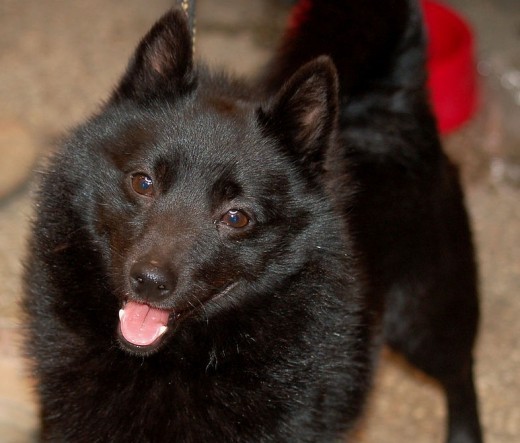
Schipperke - the little captain
Do you want a dog that looks like a black fox? Or like a tiny Belgian shepherd?
Then you may want to take a look at this breed.
Although it's standing firmly at around 32 cm, its weight varies greatly, from 3-8 kilograms.
The Schipperke is a rare breed from Belgium, whose name is said to derive either from its history as a barge dog ("little skipper"), or its origin as a shepherd.
They share much in common with the previous breeds in this article, as they are a vocal and territorial watch dog, with a zest for life and lots of energy. They are not a lap dog, but a confident, intelligent and active companion dog.
In the Kennel Club 2014 study (UK), the Schipperke had an average lifespan of 13.5 years, one of the highest of all breeds, and living to 15 and beyond is not unusual.
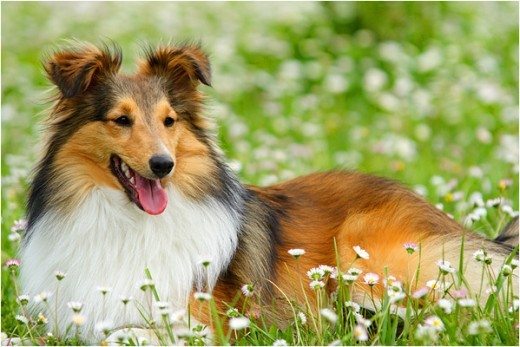
Shetland sheepdog - the "little Lassie"
Despite their similar appearance, the Shetland sheepdog is not a miniature rough collie. Hailing from the Shetland islands north of Scotland, they are however undoubtedly related to the mainland sheepdogs, like the border collie and rough collie, although nordic spitzes like the Icelandic sheepdog are rumored to have made a contribution as well.
Standing at around 35-37 centimeters and typically weighing from 7-10 kilograms, they can vary in size both above and below this.
Quite different from the other breeds on this list so far, the "sheltie" is quite timid, and work has to be done to build the dog's confidence and avoid fearfulness. This makes them however easier to handle than the more stubborn and willful dogs.
Shelties are extremely intelligent and easy to train, excelling in things like agility, obedience, and freestyle. They are as well suited as a family dog, as to being a youth's first dog, as to the elderly, but they do need some physical and mental stimulation.
The Kennel Club's 2014 study found the sheltie to have an average lifespan of 12.5 years, which is higher than the average dog.
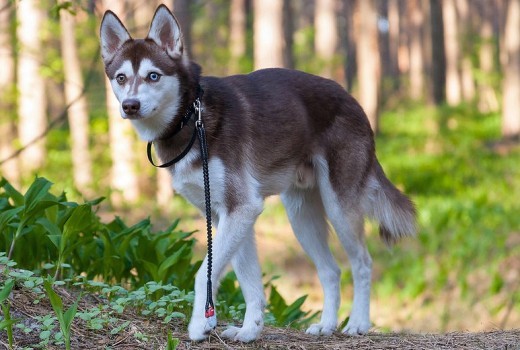
Alaskan Klee Kai - the "mini husky"
The Alaskan klee kai is one of the youngest breeds in the world, produced from unusually small Alaskan huskies, with some Siberian husky and small spitz-type dogs crossed in, in the early 1980s. Despite the catchphrase above, it is not a miniaturized Siberian or Alaskan husky.
They come in several sizes, and the largest goes above the 40 centimeter-limit I have put on breeds in this list, but they do go below that height. Those smaller dogs weigh around 4-9 kilograms.
Their temperament differs from the otherwise similar husky. While the husky is friendly and outgoing with strangers, the "klee kai" is reserved and shy around strangers, and can easily become attached to one specific person in the family. This means socialization is key, to get a social klee kai, but it also makes them a good watch dog.
Their prey drive is high, and you might never be able to train them to go off leash in an unfenced area. They are intelligent, courageous and energetic, and need plenty of exercise and stimulation.

German spitz - a big family
The German spitz is the ancestor of many small, long-coated spitz breeds today, including the Japanese spitz and the American eskimo dog (so named because of anti-German sentiment in America at the time).
They come in several sizes, but due to the purposes of this article, we will only include the three smallest - the Pomeranian (standing 18-22 centimeters tall and weighing 2-3.5 kilograms), the Kleinspitz (23-29 cm, 4-5 kg), and the Mittelspitz (30-38 cm, 7-10 kg).
The Japanese spitz is similar in size to the Mittelspitz, and similar overall to the German spitz, except they are always white.
Like most of the breeds in this list, they are excellent watch dogs, as well as companions. This however means they are very vocal, among the most vocal of all dogs, and nuisance barking is very important to deal with early.
It is also important to remember that just because a dog is small and cute, does not mean you should treat it like a baby instead of what it is, an adult dog. These adorable fluff balls need structure and respect as much as a mastiff or German shepherd.
Unlike many of the other breeds on this list however, they have a very low prey drive, and are thus easy to train to walk off leash.
They are curious, brave, and "cocky" little dogs with lots of energy and affection to spare. They are not couch potatoes however, and need their daily activity, or will make you listen to their boredom out loud.

Italian greyhound - little speedster
The Italian greyhound is the smallest of all sighthounds, and was once used for hunting rabbit. Today, it has been shrunk down in size and is not much bigger than the rabbit itself.
They still retain the large sighthound's will to run and chase, however, but do not realize how small and fragile they are. When still young and growing, their skeleton is sensitive, but the dogs may think of themselves as invincible, so great care must be taken so that they don't injure themselves in their antics.
There is arguably no breed that does poorer in harsh weather, and they need protection from the cold and wet. They also cannot be expected to live on the floor - warm, soft bedding is a must for an Italian greyhound, preferably under the covers.
Because of their hate of everything cold and wet, they can be quite challenging to housebreak - preferring to pee indoors rather than to go outside in bad weather.
Like all sighthounds, they cannot resist a moving target, but otherwise have little drive to kill small animals.
They are not easily motivated in training, but make for a great, soft-minded little companion dog, that loves close physical contact.
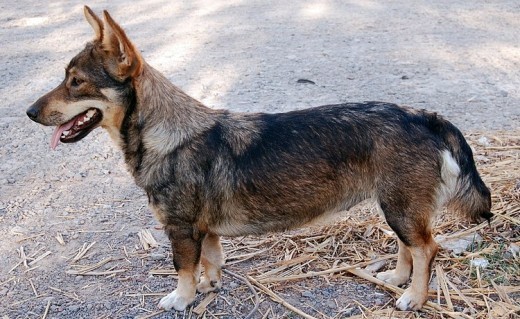
Swedish vallhund - viking wolf corgi?
The Swedish vallhund, or Västgötaspets (West goth spitz) is a close relative of the Welsh corgi and Lancashire heeler, but, like the latter, has longer legs and a shorter back. They are always wolf grey, most closely resembling a shrunken-down version of the Swedish elkhound (which it is not closely related to).
They stand 30-35 cm tall and weigh 9-14 kg, making them one of the most robust dogs in this list.
Unlike some misconceptions across the internet created by a meme about this breed, this dog is not a wolfdog, nor is it a corgi crossbreed. They do share ancient ancestry with the corgi however, and debates still rule whether the corgi came from Scandinavia, or whether the Swedish vallhund came from Britain.
However they came about, they have been herding cattle in Sweden for at least a thousand years. They almost died out in the early 20th century, but was saved by a breed enthusiast. Unlike many other breeds which have suffered from genetic bottlenecks, the Swedish vallhund remains very healthy, often living into the mid teens.
Like other cattle dogs, they are tenacious and hardy, and herd by nipping the heels of livestock (an instinct which can be redirected at people). They are said to have very good instincts, and try to care for people and livestock alike, if the dog feels they are unwell.
Like many other herding breeds, they are quite vocal, and need lots of activity, but are also very intelligent, trainable and cooperative. They will also guard the property, and make for a great companion.
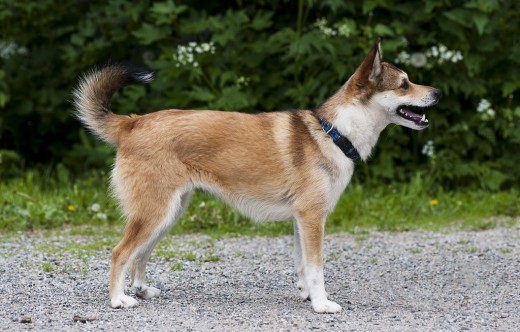
Norwegian lundehund - the puffin dog
The Norwegian lundehund was used for hunting puffins on the steep rock faces of northern Norway, and might be one of the most unique breeds of dog in the world. They have up to six toes on each foot, can close their ears at will, bend their head back so the forehead touches their back, and can splay their legs straight out. The additional toes are fully functional and can be used almost like thumbs, which makes this dog even more unusual.
They stand 32-38 cm tall, and weigh around 5-6 kg.
The original purpose for this breed was to hunt puffins on the steep rock faces of northern Norway, which is why they have their unique traits (the name "lundehund" literally means "puffin dog").
Like many other breeds, the lundehund nearly died out in the 20th century, and were only barely saved from extinction. This has led to inbreeding depression, and while the breed overall is healthy and long-lived, they suffer from poor fertility and small litter sizes.
The lundehund is an alert, vocal and active dog which does not fear new environments, and is a great companion for outdoor activities. They can however be reserved towards strangers, and they miss nothing.
They are not particularly demanding, but happy to go wherever you go, and share in your activities. A prey drive exists, but is not very strong.
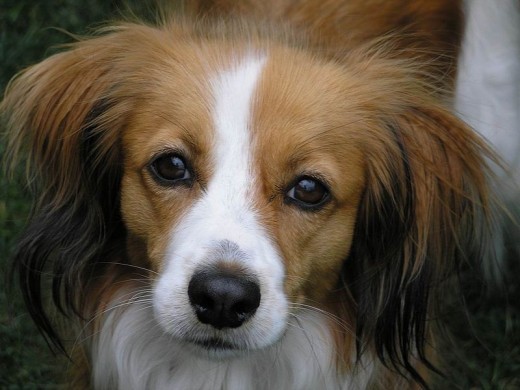
Kooikerhondje - little duck dog
The Dutch Kooikerhondje is one of the only spaniel breeds in the world that has not been exaggerated by the show ring. With small ears and a moderate, feathered coat, they can feel like a breath of fresh air to those who don't enjoy a show coat that needs to be removed, or long, dangly ears.
They stand 35-40 cm tall, and weigh around 9-11 kg.
With such a sweet face - they almost look like a larger Phalène - appearances can be deceiving. The Kooikerhondje is quite a hard dog, as far as spaniels go, and can be a challenge for the novice.
They can be quite independent, stubborn, and reserved towards strangers, with a strong guard instinct and courage. They need lots of activity and cannot be expected to be a pure companion dog. As they grow, they will test boundaries and will need calm, consistent guidance.
With all that said, they have great affection for their family, are attentive and playful, and makes for an active family dog.
#dogs#small dogs#prague ratter#russian toy terrier#papillon#phalene#portuguese podengo#miniature pinscher#min pin#lancashire heeler#schipperke#shetland sheepdog#sheltie#alaskan klee kai#german spitz#kleinspitz#italian greyhound#swedish vallhund#norwegian lundehund#kooikerhondje
65 notes
·
View notes